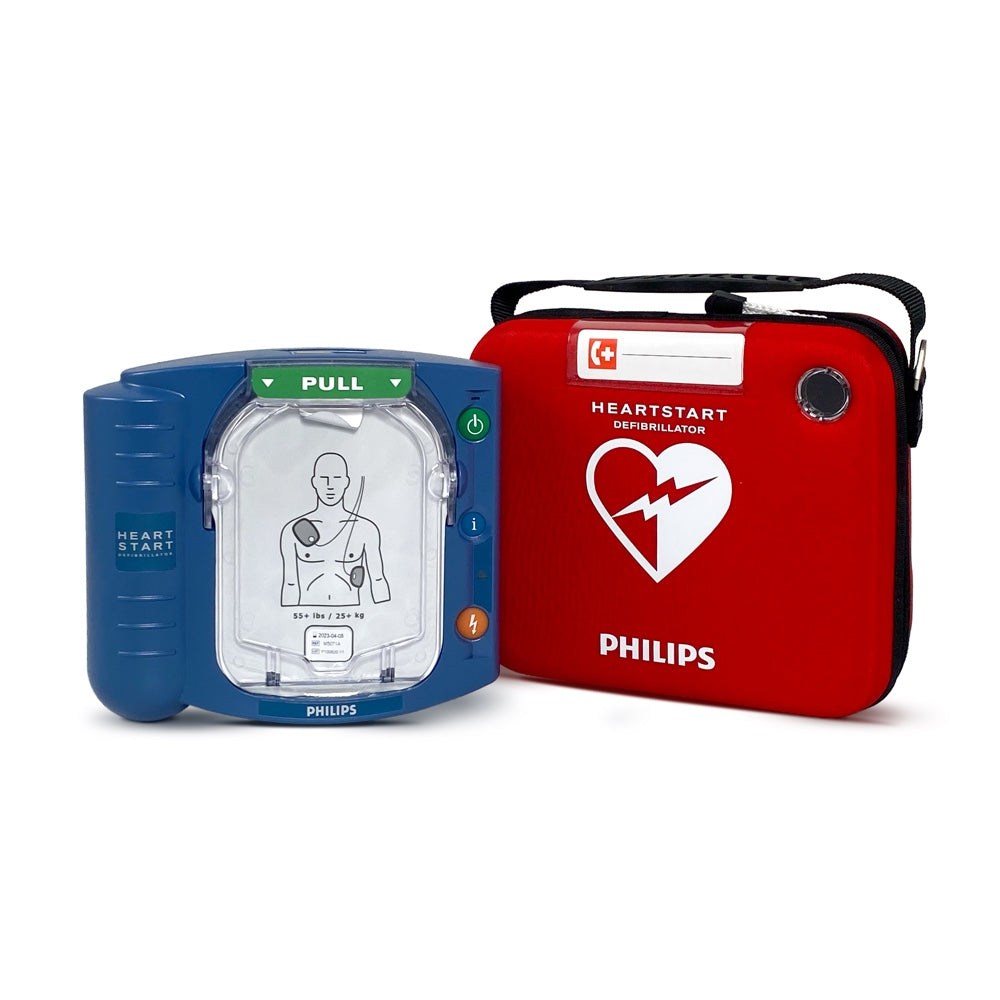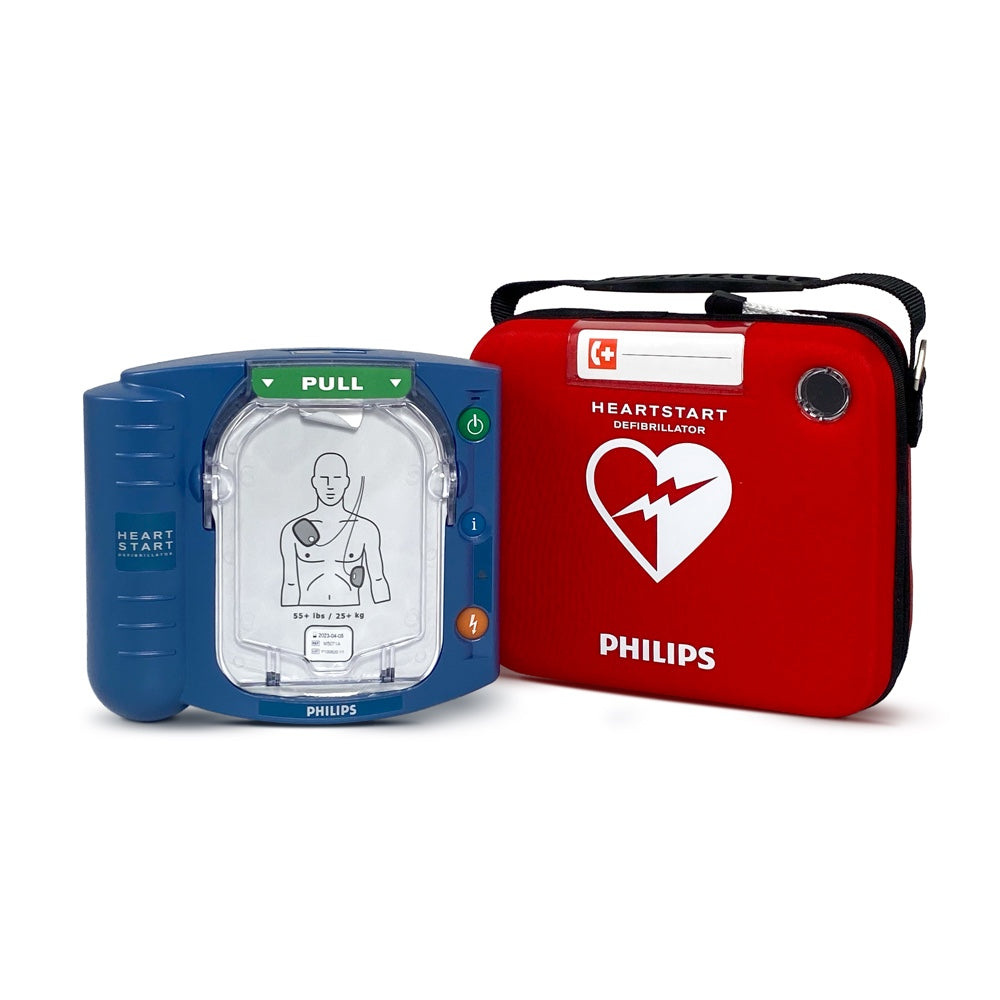






Designed for everyday heroes in extraordinary moments. When every second counts, the Philips HeartStart HS1 Defibrillator is ready for action.
The Philips HS1 allows anyone, even with minimal or no training, to treat the most common cause of suspected sudden cardiac arrest (SCA) by delivering a swift and effective shock wherever SCA occurs.
The HS1 automated external defibrillator provides real-time guidance through step-by-step voice prompts, from pad placement to performing CPR. When every second counts, Philips HeartStart HS1 defibrillator is your reliable partner, guiding you step by step.
Provides voice prompts for every step, from pad placement to performing CPR, including the frequency and depth of chest compressions and breaths. Can be converted to a trainer with the installation of SMART Training Pads Cartridge (not included).
Why Choose the Philips HeartStart HS1 Defibrillator?
It's fast to learn..
So simple to operate that a first aider with minimal training can potentially save the life of a co-worker, friend or member of the family or public.
Easy to use...
Calming natural voice provides voice prompts for every step of the way from pad placement to performing CPR.
Always ready...
The Philips HS1 conducts a series of automatic self-tests daily, weekly, and monthly, including pad testing. Ensuring the HS1 is always ready when it's urgently needed.
Includes:
- HS1 AED Defibrillator
- 1 pre-installed battery
- 1 pre-installed Adult SMART Pads Cartridge
- Quick Set-up Guide
- Supplied with a Carry Case
- Maintenance Guide
- Quick Reference Guide
- Owner’s Manual
- Date Sticker
Warranty info:
- 8-year AED warranty
- 4-year battery warranty
- Pads warranted until the expiration date
- Other accessories include a 1-year warranty.
Dimensions: 7 x 19 x 21cm(D/H/W) 1.5kg with battery and pads.
Please note: This product includes a slim carry case.








